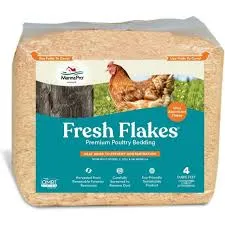
Oct . 19, 2024 05:47 Back to list
Understanding the Impact of Duck Reovirus Disease on Chinese Poultry Production
Understanding China Duck Reovirus Disease An Emerging Threat to Waterfowl
In recent years, the emergence of infectious diseases in livestock has become a significant concern for farmers and agricultural authorities worldwide. One such disease that has gained attention, particularly in China, is Duck Reovirus Disease (DRVD). This viral infection poses a substantial threat to duck populations and the broader poultry industry, necessitating detailed understanding and effective management strategies.
What is Duck Reovirus Disease?
Duck Reovirus Disease is caused by the duck reovirus (DRV), a member of the Reoviridae family. This virus primarily affects ducklings, particularly those younger than three weeks old, leading to significant morbidity and mortality. The disease is characterized by symptoms such as watery diarrhea, weight loss, neurological issues, and even sudden death in severe cases. The high mortality rates observed in infected flocks underline the urgent need for better disease management and prevention practices.
Transmission and Spread
DRVD is highly contagious and spreads rapidly among duck populations. The primary mode of transmission is through direct contact with infected birds, but the virus can also be shed in feces and contaminated environments. Water, feed, and equipment can serve as vectors for the virus, making biosecurity measures crucial in preventing outbreaks.
Environmental factors also play a role in the spread of the virus. Crowded living conditions, poor sanitation, and inadequate nutrition can all contribute to the rapid transmission of DRV among ducklings. Furthermore, the virus can persist in the environment, leading to potential resurgences in populations even after initial outbreaks appear to be contained.
Epidemiology and Impact
China is one of the largest producers of ducks globally, with a substantial industry relying on healthy and productive flocks. The emergence of DRVD poses a significant economic threat to the poultry sector. Financial losses arise from high mortality rates, decreased growth rates, and increased veterinary care. Additionally, the cost of implementing strict biosecurity measures and vaccination programs further impacts farm profitability.
china duck reovirus disease

The impact of DRVD extends beyond economics; it can also affect food security in regions heavily reliant on duck farming. As duck populations dwindle due to the disease, the availability of duck meat and eggs decreases, leading to potential price increases and food shortages in local markets.
Diagnosis and Control Measures
Diagnosing DRVD can be challenging, particularly in the early stages of infection. Laboratory tests, including polymerase chain reaction (PCR) assays and virus isolation techniques, are essential for confirming suspected cases. Early diagnosis allows for timely intervention and containment of outbreaks.
Effective control measures are crucial in managing Duck Reovirus Disease. The implementation of strict biosecurity practices is essential in preventing the introduction and spread of the virus. This includes controlling the movement of birds, maintaining clean environments, and ensuring proper sanitation of equipment and facilities.
Vaccination is another critical component of DRVD control. While there is currently no specific vaccine solely for DRV, some producers have reported success using vaccines aimed at similar viral infections. Research is ongoing to develop targeted vaccines that may provide better protection for duck populations.
Future Steps and Research
As DRVD continues to threaten duck farming in China and potentially other regions, ongoing research is necessary to understand the virus better. This includes studying the virus's genetic variability, transmission dynamics, and interactions with host immune systems. Furthermore, farmers must be educated on best management practices and encouraged to report outbreaks promptly to curb the spread of the disease.
In conclusion, Duck Reovirus Disease represents a significant challenge for the poultry industry, particularly in China, where duck farming is a vital economic activity. By improving biosecurity, enhancing diagnostic capabilities, and investing in research for effective vaccines and treatments, the threat posed by this disease can be mitigated. The collaboration between farmers, researchers, and government authorities will be paramount in safeguarding duck populations and ensuring the sustainability of the poultry industry in the face of emerging infectious diseases.
-
Premium China Bacillus Subtilis Supplier & Factory Solutions
NewsJul.30,2025
-
Premium Avermectin Supplier in China | Custom Solutions Available
NewsJul.29,2025
-
China Bacillus Subtilis Supplier - Custom Factory Solutions
NewsJul.29,2025
-
China Salivation: Leading Custom Salivation Supplier & Factory Solutions
NewsJul.29,2025
-
Leading Lincomycin Hydrochloride Manufacturer & Supplier with High Purity
NewsJul.29,2025
-
Bio-Enzyme Yogurt Growth Promoter Factory - Top Quality Manufacturer & Supplier
NewsJul.28,2025




